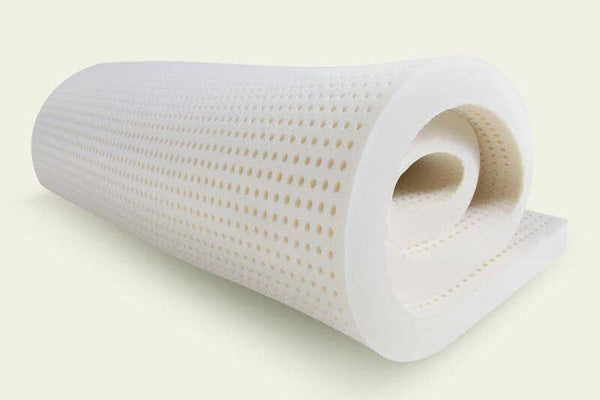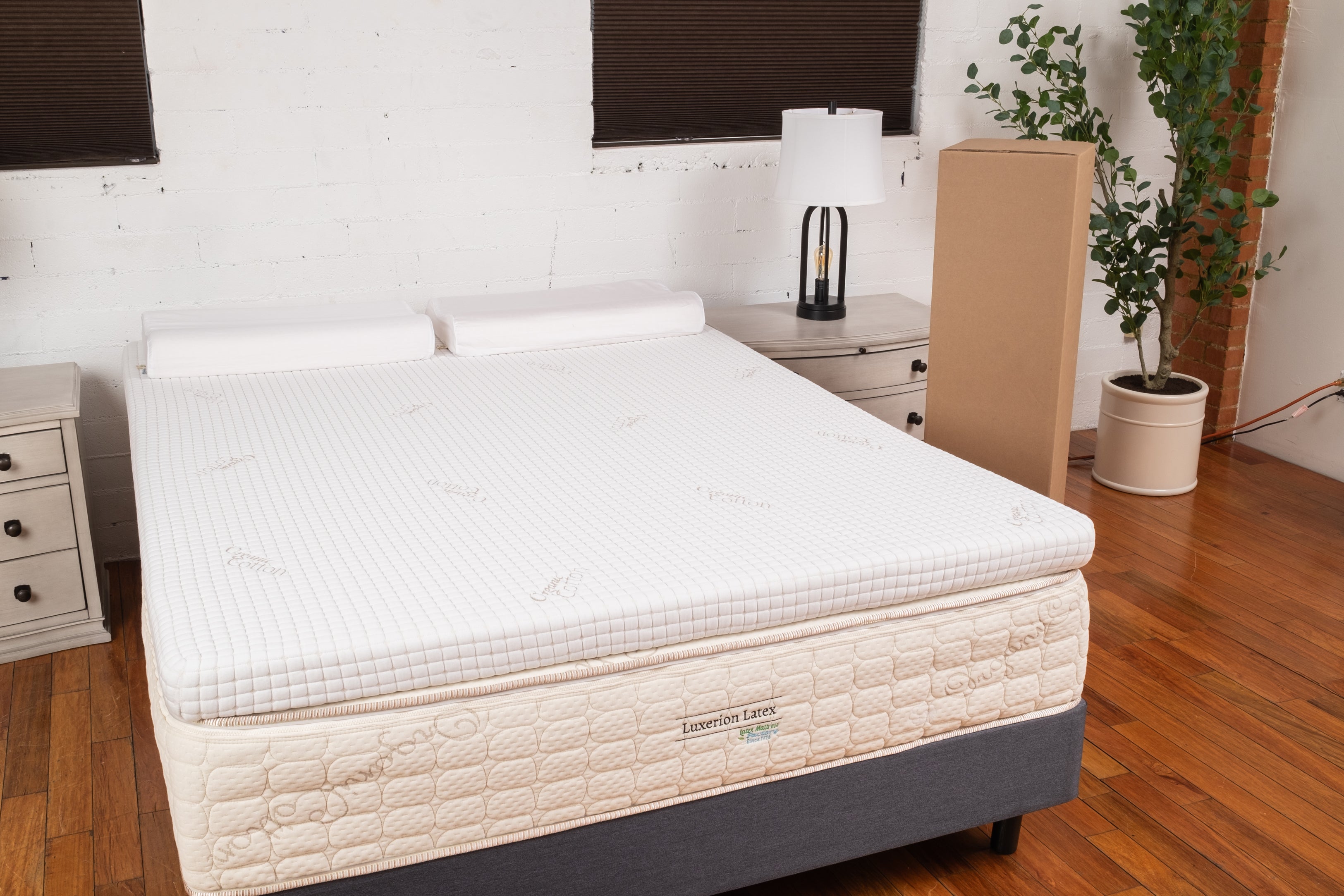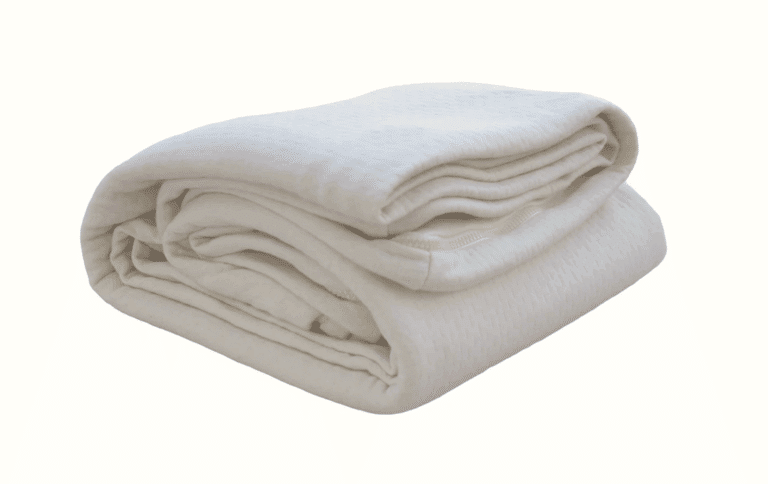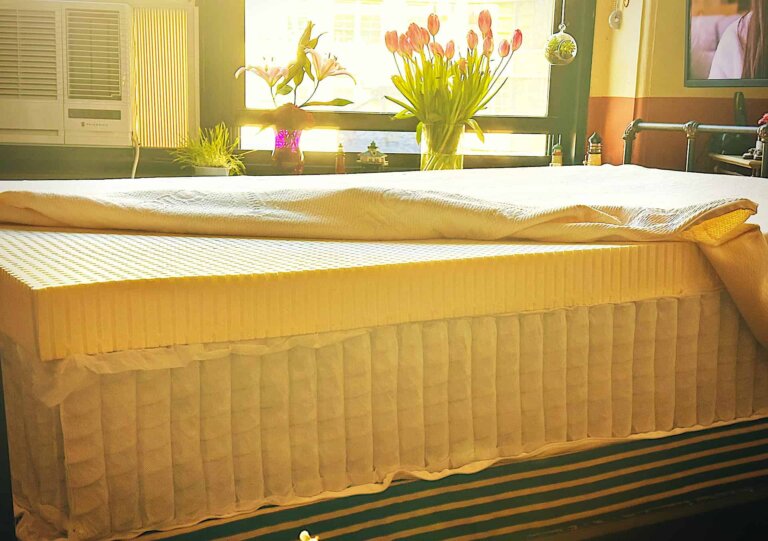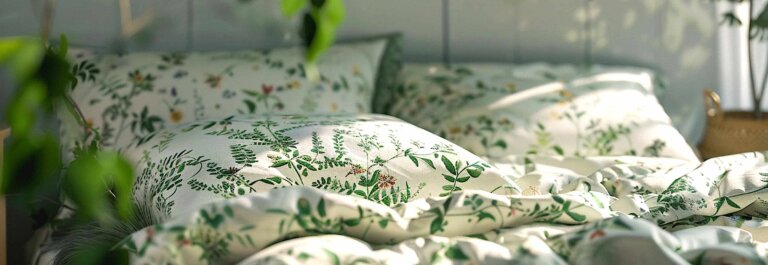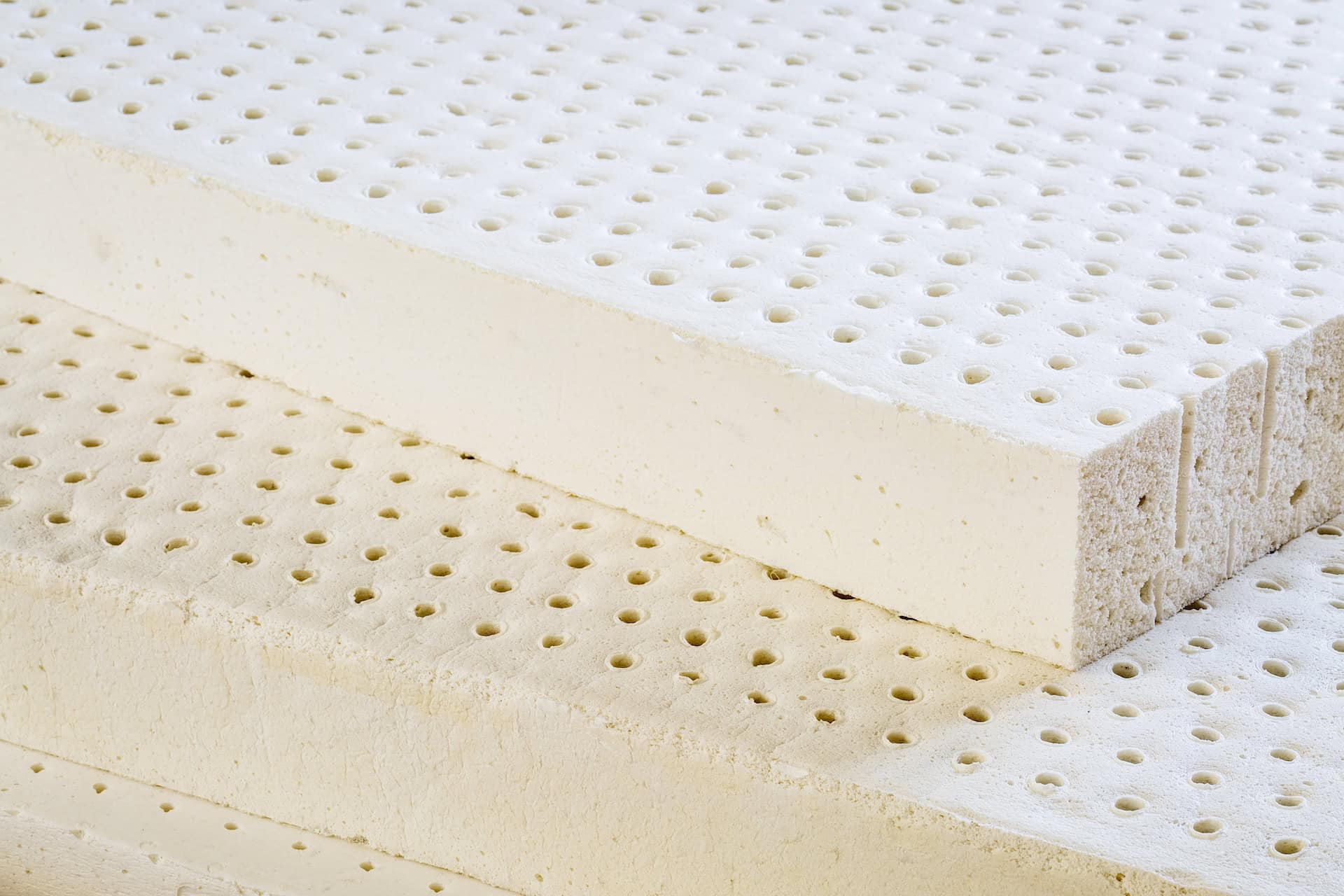
An All-Latex DIY Mattress: Bouncy, Breathable, and Beautifully Simple
Last modified on:
Understanding All-Latex Mattresses
Latex mattresses are a category all their own – springless, naturally breathable, and delightfully bouncy.
But not all latex is created equal. When shopping for latex components, you’ll run into a few important distinctions:
Dunlop vs. Talalay
This refers to how the latex is processed.
Dunlop latex is denser and more supportive (great for base layers) while Talalay latex is softer, lighter, and more breathable, making it ideal for comfort layers.
Differences in Latex Formulations
100% Natural Latex is made entirely from rubber tree sap, while blended latex combines natural latex with synthetic latex.
Blended foams tend to be more affordable but may contain petroleum-based ingredients.
Then there’s GOLS-certified organic latex, which meets strict standards for sustainability, purity, and farming practices. It’s the highest tier for those wanting the cleanest sleep possible.
A Unique Sleep Experience (That Isn’t for Everyone)
Sleeping on an all-latex mattress feels… different.
People often describe it as buoyant, springy, or even “weightless.” It conforms to your body without that sinking-in sensation you might get from memory foam, and it bounces back quickly when you shift positions.
For some side sleepers, this responsiveness can feel like a dream, but for others, it may feel too firm or too lively or just too… weird.
Some people absolutely love the feel of all-latex mattresses.
Others… not so much.
Some people totally enjoy latex as a comfort layer, but really dislike the feel of a latex support layer.
That’s why we always recommend trying out a few all-latex mattresses in stores before committing to an all-latex build.
Lay down and be still for a while (at least 15 or 20 minutes). Then try rolling around and changing positions.. Pay attention to how your body feels.
A DIY mattress is an investment, not just in materials but in your comfort. Your best bet is to find out ahead of time if latex is your kind of magic.
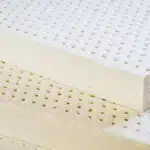
A Beginner-Friendly Latex DIY Mattress Build
Discover the simplest way to build an all-latex DIY mattress using just three layers and a zippered cover. Pure comfort, zero compromises..
Materials
(top to bottom)
Instructions
- Unzip your mattress cover and spread out the bottom half on your bed frame. Slatted bases are ideal for latex—just make sure the slats are evenly spaced and no more than 3″ apart.
- Start with your firm 3″ latex foam slab. This is your support layer. Line it up evenly with the edges of the cover.
- Next, stack your medium 3″ latex layer right on top. This is your transition layer, and it helps smooth out the feel between the firmer base and the plush comfort layer above.
- Finish the stack with your soft 3″ latex layer on top. This is your pressure-relieving comfort zone. Smooth it out with your hands, but don’t stress, latex is forgiving and will square up nicely with some patience. It doesn’t have to be perfect, just get it as close as you can.
- Zip up your cover, taking care not to snag the foam. A knit zippered cover is perfect for this kind of build as it stretches and gives you great body contact with the latex.
- Now, take a step back and bask in the satisfaction of building your own premium, all-latex mattress. Then plop on top and give it a test bounce. Your spine just made a new best friend.
Notes
This is a simple and popular build, but an all-latex mattress is not without its detractors.
Our suggestion? Head out to some mattress stores and try out all-latex mattresses to see if you like the feel of them before trying this at home.
There are also many reputable suppliers of latex foam slabs. You can choose from Dunlop, Talalay, 100% natural, blended latex, and even organic latex. We’ve linked to several options in the ‘Materials’ section above and the ‘Recommended Products’ section below.
The VIDEO below ⬇️ is from Ken Hightower demonstrating how to assemble an all-latex foam mattress, very similar to the mattress in this blueprint.
In the video example, they use a split king (a king mattress with different foams on the two sides – you can do the same on your DIY king mattress if you’d like).
They also use a 6″ latex support layer with a 3″ transition layer and a 3″ comfort layer, rather than our 3-3-3″ approach in the blueprint. But again, the magic of DIY is that you can do whatever you want, and these blueprints are just for inspiration. You do you.


